What is Storuman Gravel?
Storuman Gravel is a non-competitive gravel cycling event for everyone. It’s organized by Luspholmens Arrangörsförening together with Norrlandscyklisterna, and starts in the “hamlet of world champions” Ensamheten 9 km outside Storuman. The courses are tough, varied and hilly for those that want to give themselves a tough challenge. In addition, there is also a shorter course, a very generous max time and an e-bike class so you can choose whether you make it a really tough workout or a relaxing tour.
With this event we want to show the possibilities of cycling as a form of exercise in general, and gravel biking in the Storuman area in particular.

What is gravel cycling?
Gravel cycling is the fastest growing form of cycling, and takes you away from high-traffic asphalt roads to varied gravel roads, dirt roads and the occasional path. It floats diffusely between road cycling and MTB — you put in a lightly threaded tire that is a couple of fingers wide, lower your air pressure slightly and ride wherever it’s possible.
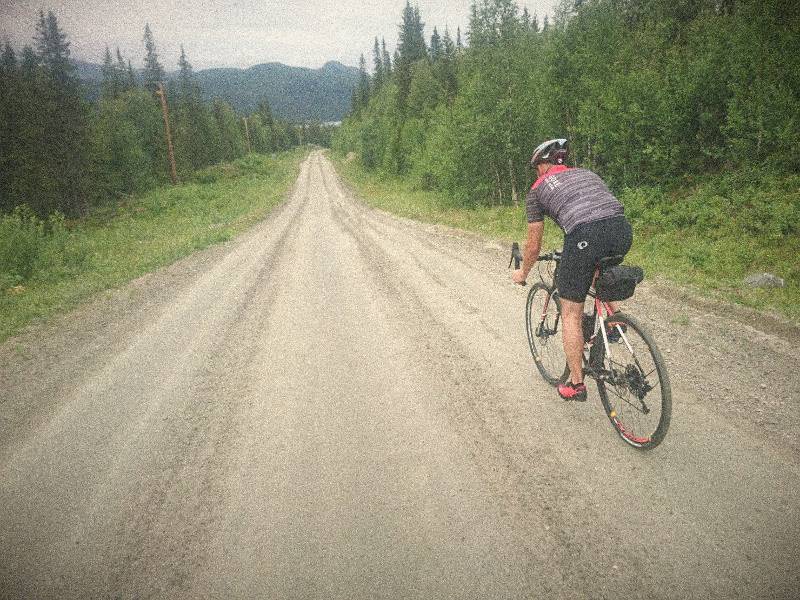
This “new” cycling genre has for real opened up rural areas for long-distance cycling in a way that was not possible when everyone wanted asphalt under their tires. From having a very limited number of roads to choose from, often with heavy and fast traffic, a huge road network with fantastic opportunities is now open for adventure.
That thing with asphalt though, even if called gravel cycling, you don’t avoid asphalt altogether, you often have to pass some to get to and from more adventurous streches of gravel road, and mixed with other it adds to a satisfying variation of surfaces.
Initially, gravel biking was a grassroots movement, but it wouldn’t grow as fast as it does now if the manufacturers hadn’t been responsive and started making bikes and tires ideal for this type of riding, and through its marketing made the world beyond the most deeply involved aware of that the genre exists.
Older road bikes only fit narrow tires, so early on, the gravel cyclists used either cyclocross bikes, an MTB, a hybrid bike, or that road bike despite narrow tires (it works better than you think). Of course, you can do that today too so you don’t have to buy another bike.
The trend started like many other things in the US and there Unbound Gravel is the most famous gravel race. In Europe it started a little later, but now the movement is real, and things are starting to happen in Sweden as well. The typical gravel road surfaces differ in different parts of the world and thus the nature of the races. In the US, there roads often very rough with coarse sharp gravel that require heavy and tough tires, while here in Sweden we usually ride finer gravel and get away with narrower and lighter tires.
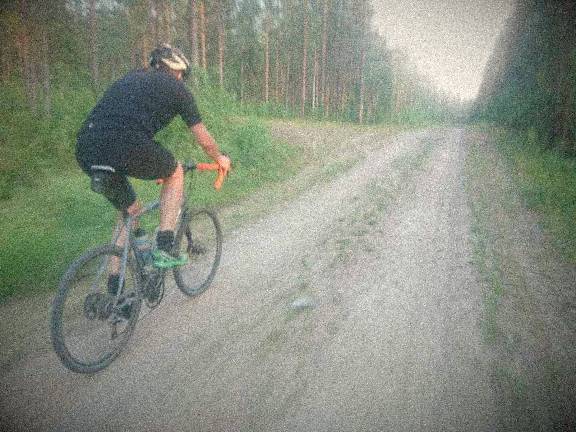
If you have been into road cycling, you know that traffic can be problematic and it may be difficult to find nice rolling roads to ride on. If you include gravel and dirt roads in your riding, a whole new world opens up, especially here in rural Sweden. Almost no traffic, great variety, bends and slopes, up and down, and you see villages and surroundings you didn’t know existed. An excellent form of cycling for exploring the nearby area — getting the most out the riding you can do where you live.
Riding on the roads that exist even if they are not perfectly smooth may seem like a pretty obvious idea, so why didn’t anyone think about it sooner? The cycling culture may have had too much focus on professional cycling and developed in parts of the world where road cycling on asphalt has such good conditions that there was no need to broaden the perspective. Whatever the case, gravel biking is now here to stay.
A dedicated “gravel bike“, a bike with drop bars and 30 – 45 mm wide gravel tires, is also fast on asphalt. Up to just over 30 km/h you can hardly notice any difference from a regular road bike. It is also possible to ride surprisingly fast and comfortable on gravel roads, which means that many hard-core road cyclists discover the genre. The manufacturers help, a modern road bike with disc brakes often fits fairly wide tires so with a simple tire swap it becomes a competent gravel bike.
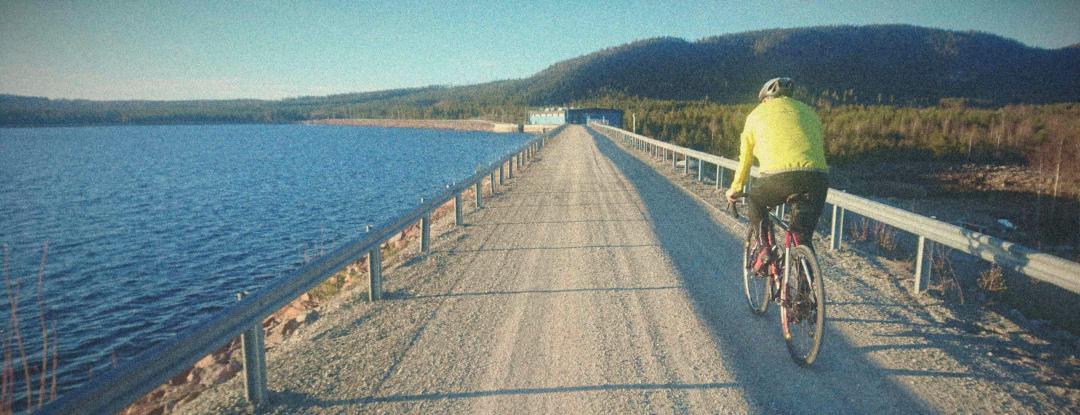
MTB cyclists, who may think of road cycling as boring consisting mostly of riding busy and straight asphalt roads, like the variety and flexibility gravel biking provides. A basic MTB that has a suspension fork but is rigid at the back (“cross-country MTB ”, XC) works almost as good as a dedicated gravel bike, especially if you fit a bit narrower and smoother tires.
There’s no clear definition of what a gravel bike is or what a race course looks like. There are gravel bikes that simply is a road bike with slightly wider tires, to variants that are close to MTB with dropper post and suspension fork. The common denominator is that (almost) all have drop bars, and fit wider tires than a traditional road bike, but (usually) narrower than an MTB.
Gear tips
The “secret” with a good gravel bike is not the drop bars, but good gravel-specific tires. Suitable width, sufficient thread and a relatively soft rubber compound. They do wonders for rolling resistance, control and not least comfort.
The gravel bike’s tires are not inflated to be as hard as on a regular touring bike. With the touring bike you know that if the tires are soft it rolls poorly, but the softer rubber compound in a good gravel tire means that the increase in rolling resistance is relatively small. When riding over gravel, the soft tire swallows the small bumps so it becomes less jittery meaning more comfort, better ground contact, and it rolls better, so in all you get lower rolling resistance despite the softer tire. Of course, on smooth asphalt a harder tire is a little faster, so on a race course with mixed surfaces choosing a suitable tire pressure can be an exciting question for those who like to optimize for marginal gains.
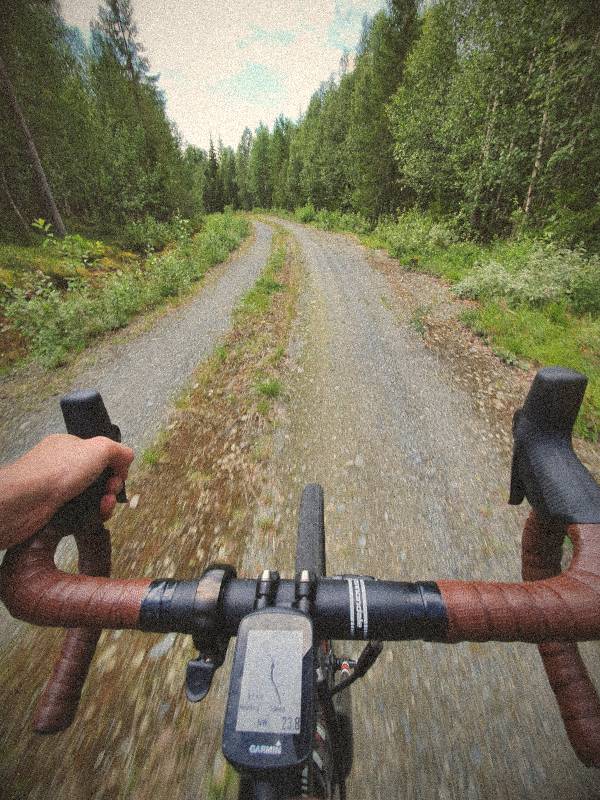
When it comes to tire width, one can say that 40 mm is the most all-around, with it you can ride “all” surfaces and it’s neither slow nor heavy on paved roads. Very strong cyclists often ride with a bit narrower tires, and if the ground is a little less coarse, a narrower tire can be faster. You may want wider if you want more comfort, or more stability in downhills on loose gravel. If you only have one pair of tires, 40 or 45 mm is a good choice. It should be said tha the trend is towards increasingly wider tires, but the reason for that is that the road surfaces in other places of the world is often rougher than we are used to see in Sweden.
If you have an older bike or one that is not specifically made for riding gravel, then it may not be possible to fit as wide tires as 40 mm into the frame, and then the best choice is the widest that fits. The standard recommendation is to keep at least 4 mm between frame and tire, but if you don’t ride in the mud you can skimp on it a little. However, sideways in the fork the distance should be kept as if a spoke breaks or you get a puncture and the tire starts rubbing against the frame it may be dangerous at speed if it occurs in the front wheel. However, most bikes have plenty of space in the fork so this is rarely a problem.
If you have to use narrower than 40 mm one can say that about 30 mm is the lower limit where it doesn’t feel limiting, and at 35 mm there is rarely a need to widen further. That may seem narrow considering that regular touring bike tires are often wider, but with the soft rubber compound and lower air pressure, the gravel tires are more capable on coarser ground than one may think. It’s also possible to have different tire widths front and rear, bikes can often fit a somewhat wider tire in the fork.
The thread pattern on a gravel tire usually consists of fairly closely spaced flat knobs. These roll well and provides good grip in most conditions a gravel cyclist will encounter. Only if you ride in wet and muddy conditions you need coarser patterns, such as usually seen on typical MTB tires.
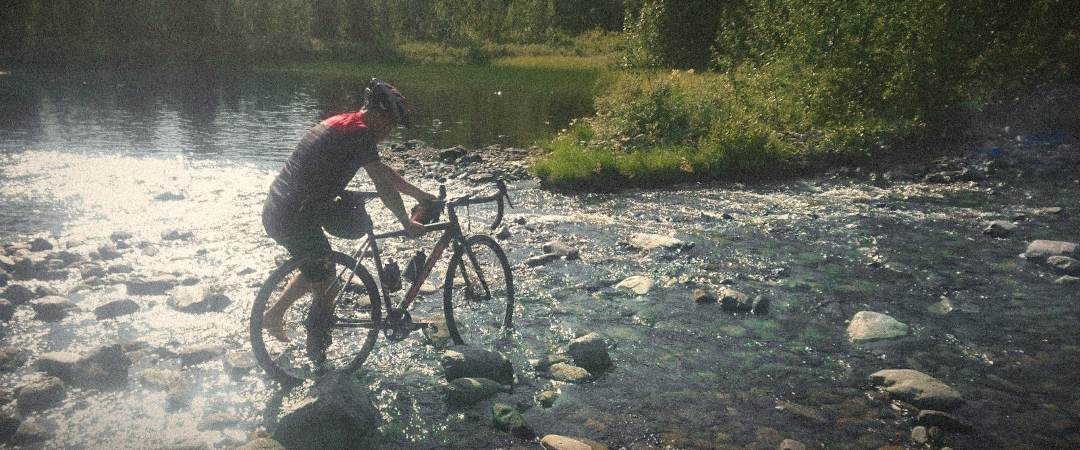
Experienced gravel cyclists usually ride without tubes in the tires, tubeless, something that has been standard in the MTB world for many years. The advantages of tubeless are lower rolling resistance and lower risk to get a puncture. However, it can be a little cumbersome to work with as the installation is often quirky, and the sealant dries in a pool if the bike is standing for long periods. For those who ride their bike less often, inner tubes may therefore be the better alternative, and it should be stressed that the tire makes a much bigger difference in rolling resistance than the inner tube (or lack thereof).
If you still want to optimize for marginal gains and get roughly as low rolling resistance as tubeless, you can use inner tubes made out of latex. Today they are somewhat exotic as most people go for tubeless, but they are still good (search for Challenge latex or Vittoria latex). Latex is an extremely soft and compliant material, hence the low rolling resistance, but it is also a bit porous and therefore loses air fairly quickly so you have to pump before every ride. However, on a bike for exercise and competition that may be acceptable. The tires themselves are today almost always designed for being used tubeless, but of course they also work well with an inner tube.
The next thing to think about after the tires is the aerodynamics. You don’t have to be a very fast rider for it to play a role, as there are both headwinds and downhills. On flat ground with no wind one can roughly say that over 25 km/h it starts to have a real impact, and that 80% of the air resistance is caused by the cyclist rather than the bike. What makes the most difference is thus wearing tight-fitting clothes (no fluttering in the wind) and a low handlebar so that you don’t catch as much wind.
When it comes to lowering the handlebars you have to be careful though as if you are not used you may get some back or neck pain, and if you are inflexible it can be more difficult to get power into the pedals if you are sitting too much bent forward. A drop bar has the advantage that you can change the grip and position between more upright and more forward depending on the situation. With a straight handlebar you need to set it in a position you can hold for the entire distance.